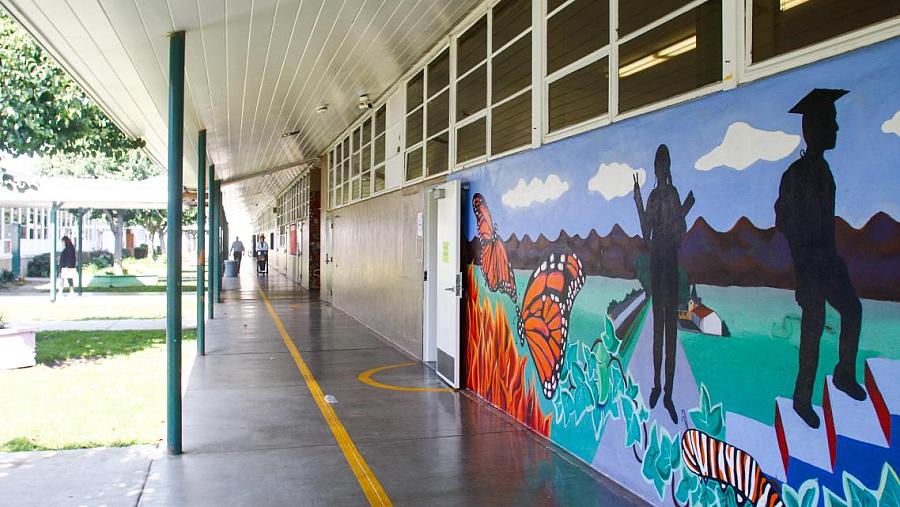Why didn’t kids show up to class last year in one Bay Area school district?

Cesar Chavez Ravenswood Middle School in East Palo Alto, California
For over 48 hours during the week of February 20, some residents of East Palo Alto sat in their homes without heat or light because of a winter storm, which brought freezing temperatures and snow at nearby higher elevations. Two schools in the city were forced to cancel classes because they too were without power.
“We are serving the needs of the most vulnerable, and for them to be able to eat at our schools and to be able to have heat and power at our schools is so important, and I’m disappointed our schools were not prioritized (by PG&E),” said Ravenswood City School District Board President Jenny Varghese Bloom last week, sharply criticizing the utility company’s slow response to the area's outages. This isn’t the first time residents have been left in the dark or displaced by flooding from storms in the community.
The district sits in an especially diverse area for the Bay Area and there’s a palpable sense of pride in those who come from the tight-knit community. A school board member went door-to-door last week to hand out gift cards, blankets and power packs to the elderly and most vulnerable. She called elected officials to ask them to pressure PG&E to pay attention to her struggling community.
For a long time, test scores have slumped in the East Palo Alto school district, which lies in the shadow of Stanford University and neighboring wealthy Silicon Valley districts on the other side of the freeway. But last school year, something more concerning happened: there was a huge jump in students who weren’t coming to class at all.
Chronic absenteeism (missing 10% or more of school days during the school year) in the district of 1,600 students was “very high” — over 50% — for the 2021-22 school year, when students had fully returned to classes from remote learning during the COVID-19 pandemic. This figure stood at about 15% before the pandemic. The statewide average last year was 30%.
I have several questions I would like to answer in my reporting for the 2023 California Health Equity Fellowship.
Why were students missing class at such a high rate? What effects does missing 18 or more days of instruction a year have on students?
Previous reporting on chronic absenteeism has found that there are challenges for students who are socioeconomically disadvantaged. They may have to watch younger siblings when parents work, or face challenges finding transportation to school. Illness, or exposure to illness, during the pandemic could be another reason for missing school.
Some 86% of students in the district are socioeconomically disadvantaged, which means that they are eligible for free or reduced priced meals or have parents or guardians who did not receive a high school diploma. Nearly 47% have experienced homelessness.
Do students who are chronically absent do worse in school and have less success pursuing higher education than other students? The district’s test scores took a dip last spring, so there likely is a correlation between missing school and student performance.
Most importantly, I want to find out what the district is doing to fix this high rate of absenteeism.
In many ways, it’s a moment of transformation for the district. Some schools, without central air conditioning, air filtration systems, and lacking ADA compliance are getting their first updates since the 1960s thanks to bond financing.
Then there are philanthropists and organizations who financially support the district to build new facilities and run after-school programs. For example, a real estate firm gave $30 million to the district recently to build a community hub.
People seem to finally be paying attention to the district, but officials are grappling with a series of challenges: How to keep the district financially afloat, how to attract community members back in who have left for charter schools (enrollment has fallen 76% in the district since 2000), and how to improve academic achievement. No easy feats.

